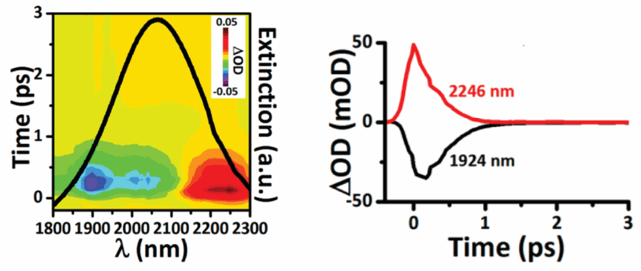Materials that exhibit localized surface plasmon resonances (LSPRs) have strong interactions with light that are highly dependent on material geometry and carrier concentration. Our group studies how manipulating these characteristics allows precise control over the LSPR position throughout the visible-IR which enables applications for high-sensitivity sensing and photothermal therapies.
Manipulation of LSPR via carrier concentration

Materials with plasmon resonances in the IR are desirable for optical switching for telecommunications, and photon detection. One promising material of this class are nanocrystals made with oxides that have epsilon-near-zero wavelengths in the near IR. Indium-doped cadmium oxide nanocrystals show stable and spectrally narrow LSPR features that are tunable throughout the IR by adjusting the carrier concentration via doping. We found that optical response of the LSPRs in these nanocrystals red-shifts under intraband excitation, and blue-shifts under interband excitation.
Manipulation of LSPR via acoustic phonons

Following photoexcitation, energy is rapidly transferred to the lattice via the generation of phonons. When this timescale is significantly shorter than the period of a specific phonon mode, the corresponding phonons are in phase and constructively interfere to cause oscillations in geometry and, consequently, the LSPR. In addition to characterizing this phenomenon in several systems, we have been able to utilize it to modulate the coupling between gold bipyramids and an attached molecular dye.
